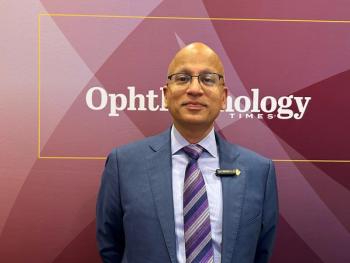
Patients need to be monitored closely after intravitreal triamcinolone injection
Patients who undergo intravitreal triamcinolone (IVTA) injection for the treatment of retinal disease should be closely monitored because of the risk of steroid-induced IOP, explained Michele C. Lim, MD, during the glaucoma subspecialty day meeting.
New Orleans-Patients who undergo intravitreal triamcinolone (IVTA) injection for the treatment of retinal disease should be closely monitored because of the risk of steroid-induced IOP, explained Michele C. Lim, MD, during the glaucoma subspecialty day meeting.
The incidence of elevated IOP after IVTA injections is high, ranging from 20% to 52% in various published studies.
"The mean time to observation of elevated IOP post-injection is 4 to 8 weeks, but it can occur as early as 1 week after treatment," noted Dr. Lim, who is affiliated with the University of California, Davis.
Despite the high incidence of elevated IOP, most eyes can be successfully treated with anti-glaucoma therapy, she noted.
The most common indications for intravitreal steroids are age-related macular degeneration (choroidal neovascularization), diabetes (macular edema, proliferative diabetic retinopathy), central retinal vein occlusion (macular edema), and cystoid macular degeneration after cataract surgery, Dr. Lim said.
She did warn that patients who are suspected to have glaucoma or have glaucoma should be vigilantly monitored because of the higher risk of steroid-induced elevated IOP.
Newsletter
Don’t miss out—get Ophthalmology Times updates on the latest clinical advancements and expert interviews, straight to your inbox.



















































.png)


